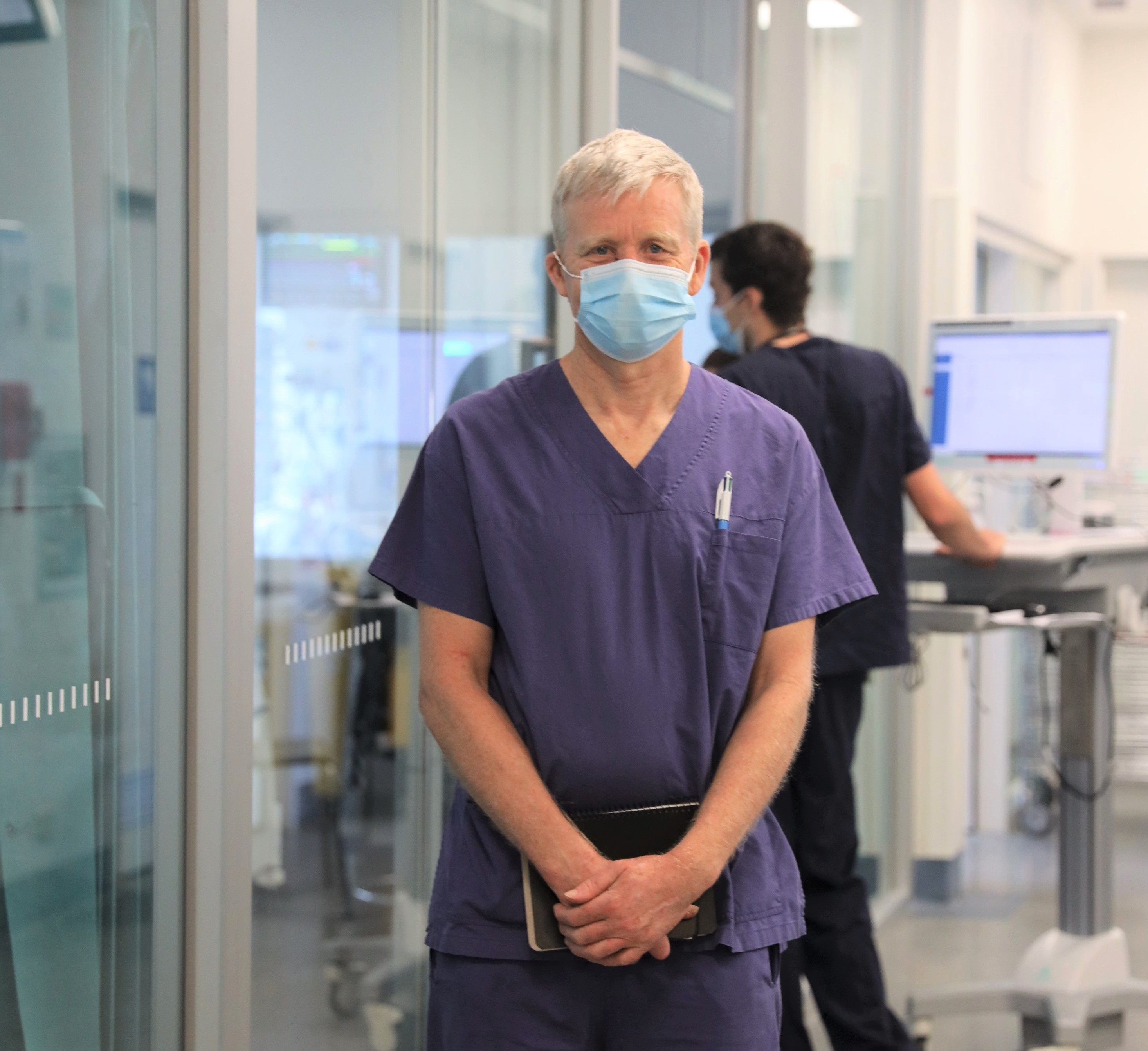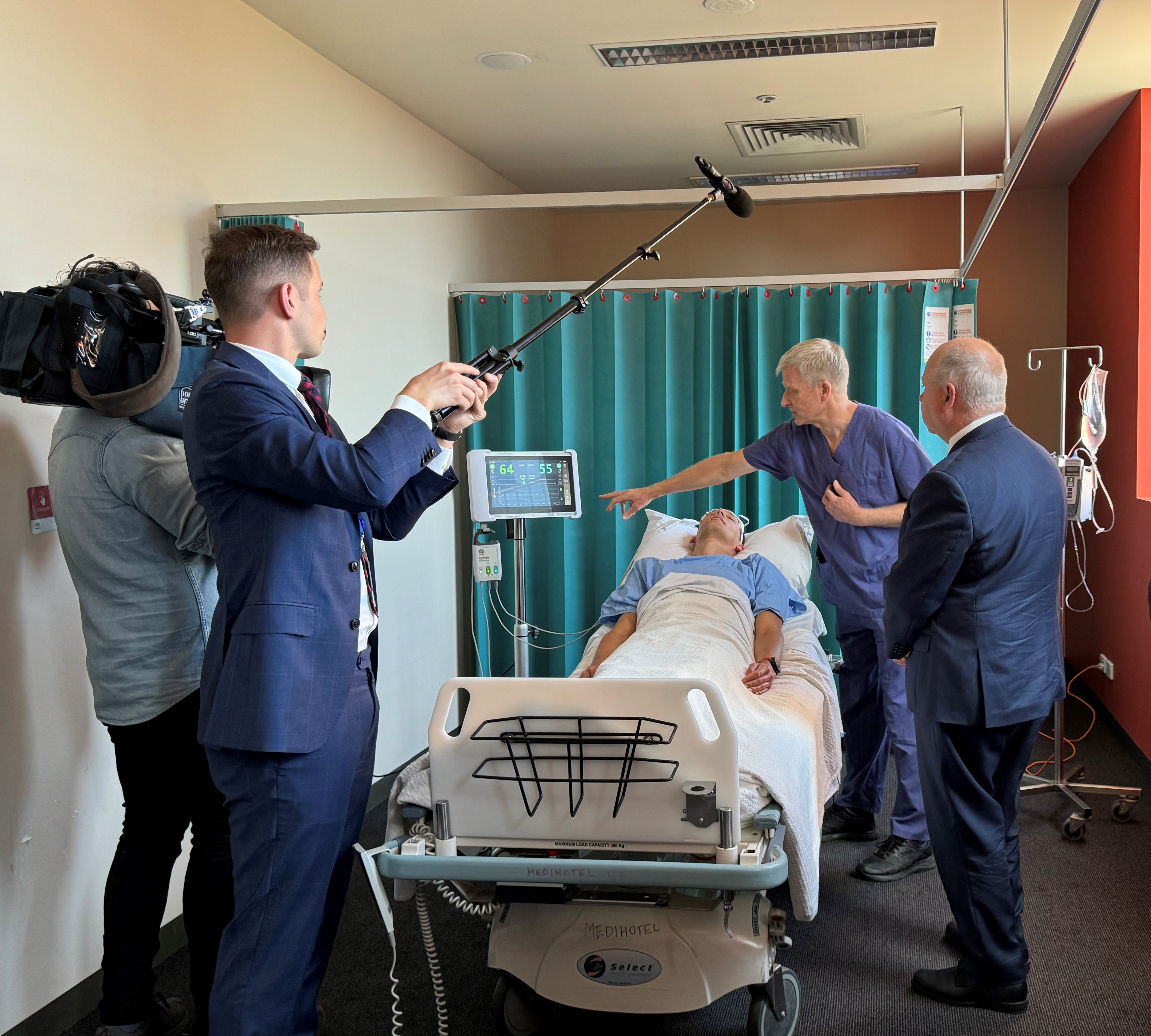Victorian Government backs brain monitoring technology led by St Vincent’s clinician-researcher

Pictured above: Dr Barry Dixon
The Victorian Government has announced a $2 million investment in a medtech start-up that has designed a world-first brain monitoring device for trauma patients. The revolutionary technology has been developed by Cyban, a medtech company founded by Dr Barry Dixon, an Intensivist at St Vincent’s Hospital Melbourne.
The funding from Breakthrough Victoria will help support Cyban’s submission for US Food and Drug Administration (FDA) approval of its Brain Pulse Monitor and will enable the company to expand its workforce in Victoria from 13 to around 50 staff by 2027. “This investment will take next generation medical technology made in Victoria one step closer to breaking into international markets,” said the Victorian Treasurer and Minister for Economic Growth, Tim Pallas.
Shaping new solutions

Pictured above: Dr Barry Dixon demonstrating the brain monitoring technology to Victorian Treasurer and Minister for Economic Growth, Tim Pallas, and media
The pioneering technology, which is currently at investigational stage, is designed to monitor the brain oxygen level of patients who have sustained a brain injury without need for invasive surgery.
Instead, it uses external receptors that are placed on the patient’s head to collect essential information that will potentially help guide patient treatment. The only methods presently available to determine a patient’s brain oxygen level is through physically testing reflexes intermittently or to surgically cut a hole in the patient’s skull to insert monitoring probes.
Dr Dixon’s first-hand experience of working in the hospital’s Intensive Care Unit (ICU) inspired his research.
“In the ICU we often see patients when they have deteriorated considerably and what became clear was that the current options to monitor patients on wards meant we’d often catch the deterioration at a late stage. That made me wonder if there was a way we could monitor patients differently to be able to pick up the deterioration sooner,” said Dr Dixon, who has worked as an ICU doctor for the past 26 years.
The brain monitoring device being assessed hopes to enable the early detection of cerebral hypoxia (a neurological condition caused by lack of oxygen to the brain).
“If we had a non-invasive, simple approach we could apply to everyone universally, that would really be a game changer,” Dr Dixon said.
The core aim of this next-generation technology is to provide clinicians with vital patient data on intracranial pressure, brain oxygen levels and cerebral perfusion that will potentially allow earlier intervention, reduce mortality rates and minimise long-term disabilities that result from oxygen depletion, including traumatic brain injury and stroke.
It is hoped the non-invasive, continuous monitoring approach will help advance the way brain injuries are detected and managed to ultimately reduce risks to patient. “By increasing diagnosis accuracy and accelerating treatment time, hospitals can reduce patient stays and improve patient outcomes, simultaneously,” said Dr Dixon.
The Brain Pulse Monitor is currently being assessed as part of clinical trials across four Victorian hospitals including St Vincent’s Hospital Melbourne, which is the lead trial site. Trials are also being conducted in Scotland and the US.